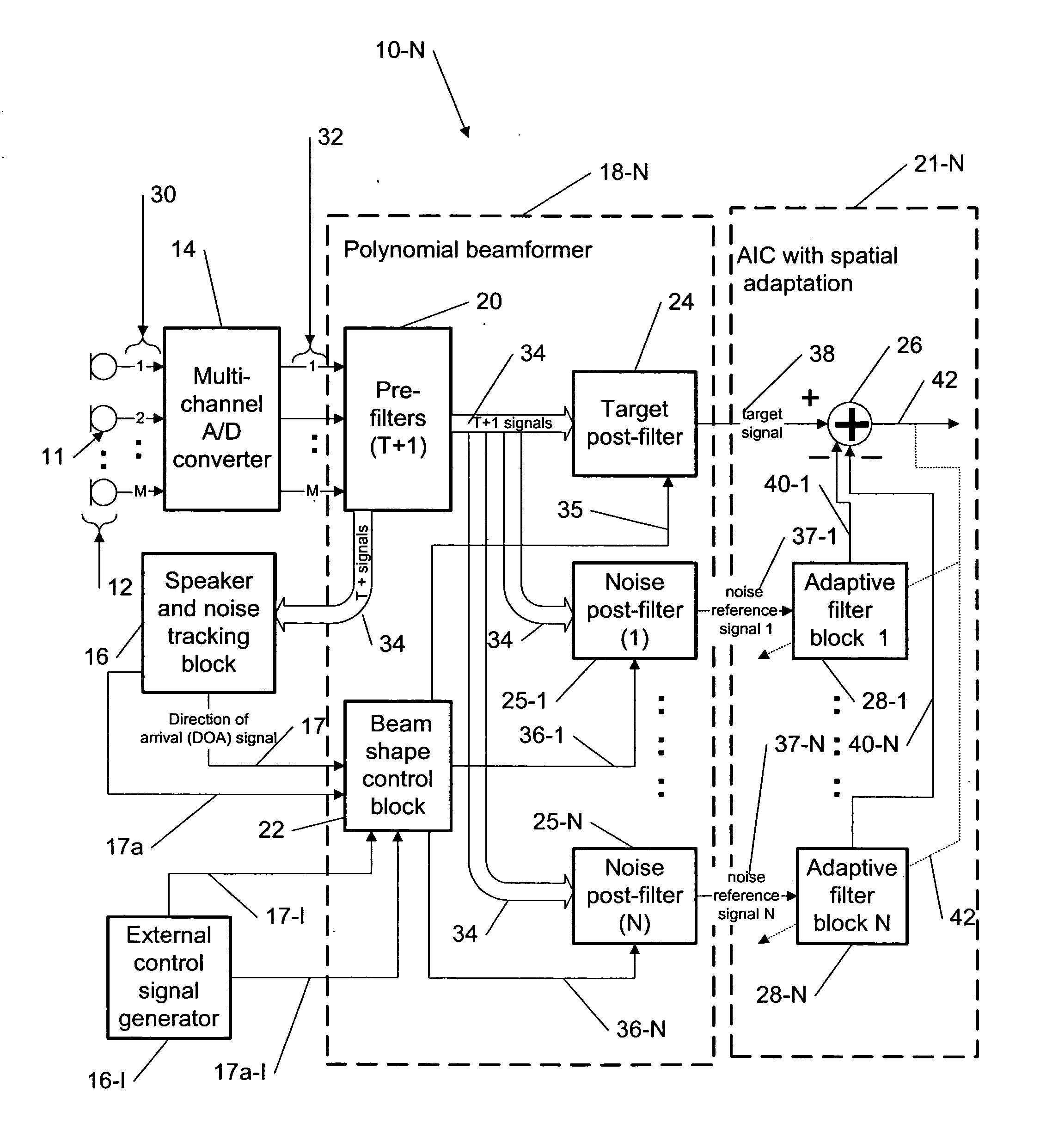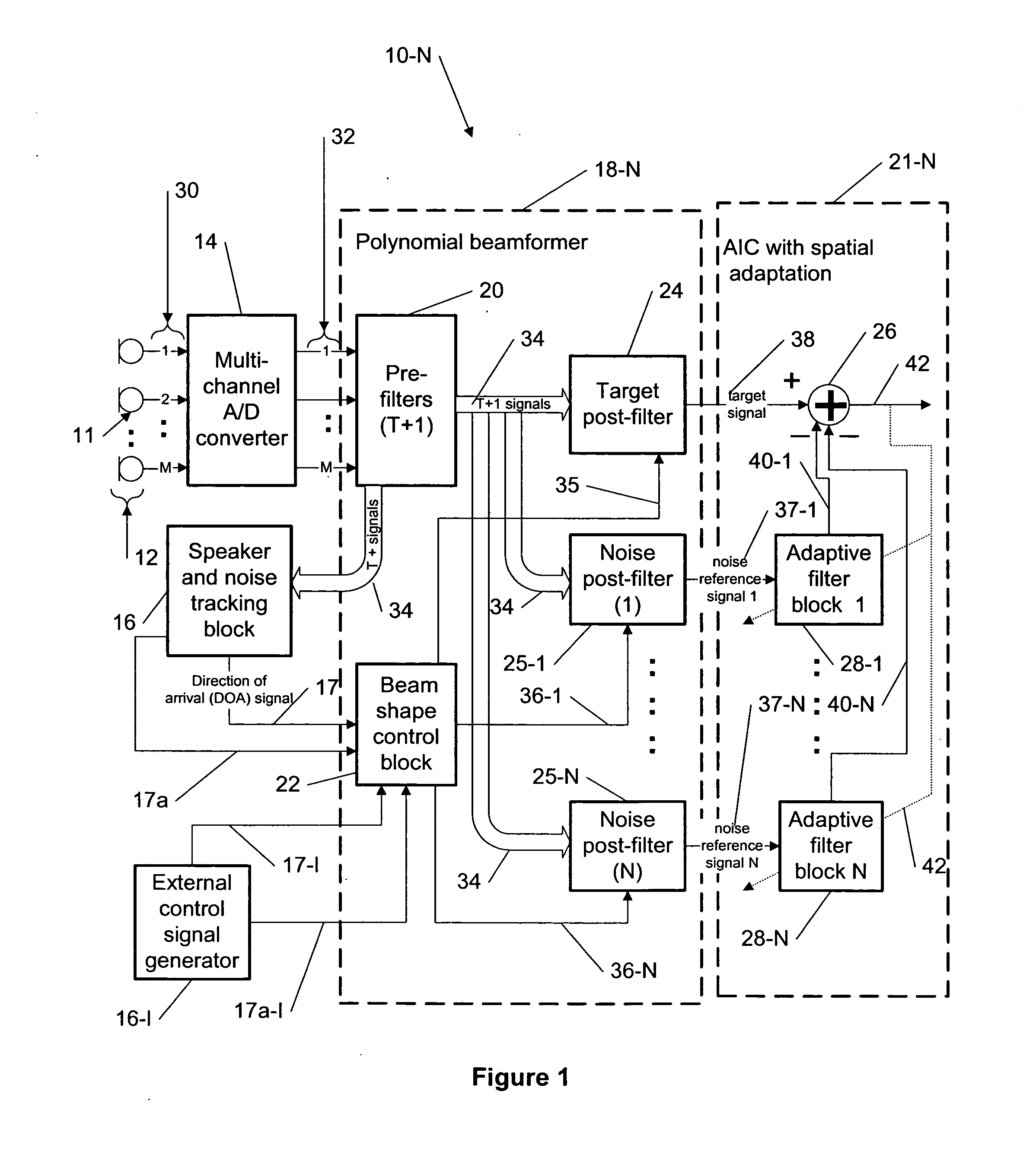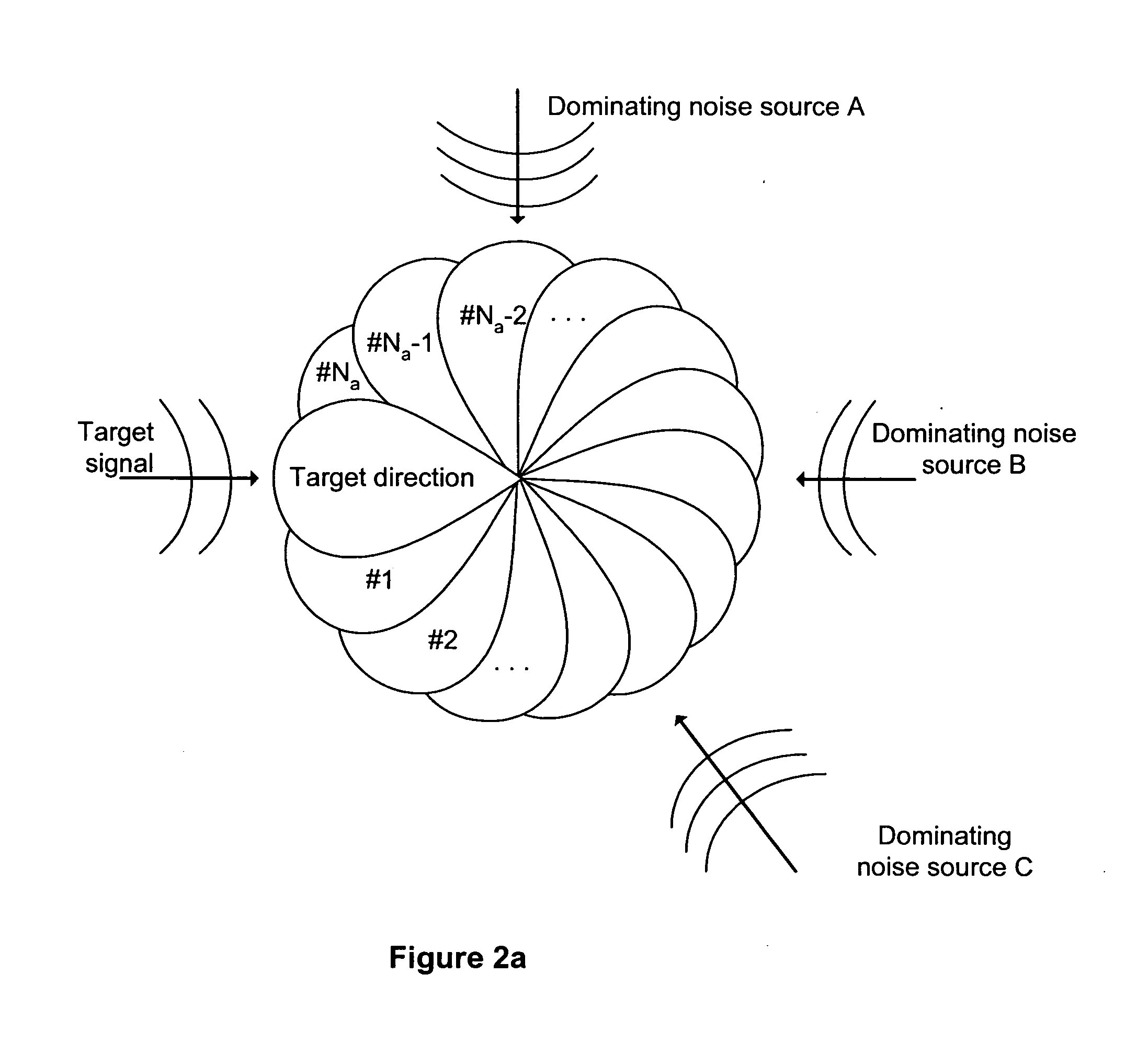Method for generating noise references for generalized sidelobe canceling
a generalized sidelobe and noise reference technology, applied in the field of generating noise references for adaptive interference cancellation filters, can solve the problems of fractional delay filters, beamformers that require a rather exhaustive recalculation of complementary filters, and cannot provide as good interference cancellation
- Summary
- Abstract
- Description
- Claims
- Application Information
AI Technical Summary
Benefits of technology
Problems solved by technology
Method used
Image
Examples
Embodiment Construction
[0033] The present invention provides a method for generating noise references for adaptive interference cancellation filters for applications in generalized sidelobe canceling systems. Said noise reference signals in turn are used for generating noise estimating signals using said adaptive interference cancellation filters, followed by subtracting said noise estimate signals from the desired signal path, thus providing further noise reduction in the system output. More specifically the present invention relates to a multi-microphone beamforming system similar to a generalized sidelobe canceller (GSC) structure, but the difference with the GSC is that the present invention creates noise references to the adaptive interference canceller (AIC) filters using steerable beams that block out the desired signal when the beam is steered away from the desired signal source location.
[0034] When a desired signal source moves around, the beam direction needs to be changed. According to the pre...
PUM
 Login to View More
Login to View More Abstract
Description
Claims
Application Information
 Login to View More
Login to View More - R&D
- Intellectual Property
- Life Sciences
- Materials
- Tech Scout
- Unparalleled Data Quality
- Higher Quality Content
- 60% Fewer Hallucinations
Browse by: Latest US Patents, China's latest patents, Technical Efficacy Thesaurus, Application Domain, Technology Topic, Popular Technical Reports.
© 2025 PatSnap. All rights reserved.Legal|Privacy policy|Modern Slavery Act Transparency Statement|Sitemap|About US| Contact US: help@patsnap.com



